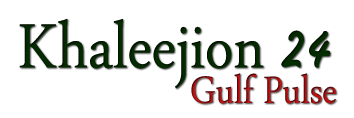المملكة: 14 new requirements for the use of pesticides… prohibiting mixing them near flames or children – urgent

The regulation aims to determine the technical and procedural requirements and controls and unify preventive practices and procedures among workers in this sector, as well as safety precautions when using PesticidesPublic health, and raising the level of professional awareness about the importance of following preventive and technical instructions when dealing with pesticides or chemicals, which contributes to reducing health and environmental risks resulting from improper use.
Personal protective equipment…the basis for worker protection
The regulation confirmed that the use of Personal protective equipment represents a major focus for ensuring the safety of workers when dealing with pesticides, as it requires its use in all stages of work, from preparation to completion of application.It stipulates that this equipment must conform to international specifications, and be carefully selected to suit the type of work and pesticide used, with full commitment to reading the manufacturer’s instructions on methods of use. And proper wearing, cleaning and regular maintenance.
It also stressed the importance of the equipment being comfortable and suitable for the body, so that it does not impede movement, and that it should be loose and designed to cover the entire body, taking into account the factors that affect its resistance to chemicals, such as the nature of the pesticide and the duration of exposure to it.
And it was obligatory The regulation stipulates that any person who cleans or washes this equipment must be aware of the possibility of its contamination with pesticides and the potential health damage resulting from that.
The regulation stipulates the necessity of examining Equipment daily before use to detect any leaks or ruptures, and repair damaged ones or dispose of them immediately.
It required the provision of clean places designated for storing unused personal clothing, and separate places for putting on and taking off protective equipment away from pesticide storage or application areas.
The regulation prohibited wearing any contaminated equipment, and stressed the necessity of Wash them separately from other clothes, with daily cleaning before reusing them, and replace filters and respirators when you notice any damage or difficulty breathing, or after 8 hours of use in the absence of specific instructions from the manufacturer.
Details about protective clothing
The technical regulations touched in detail on personal protective equipment for the body, emphasizing the necessity of using protective clothing resistant to chemical substances such as long-sleeved shirts, long pants, or protective coats.It explained that these clothing must be loose and designed to cover the entire body, and must be worn over work clothes so that the person applying must wear two layers, as well as The pants must be closed over the shoes from the outside to prevent the pesticide from leaking into them, and the joints between the sleeves and gloves must be sealed with adhesive tape to prevent the substances from leaking onto the skin.
The regulations indicate that protective coats must have several specifications, including that they must be lightweight and flexible at the wrists, equipped with a hood, and free of external pockets that may retain pesticide residues, and that They must be made of materials that do not absorb pesticides and are resistant to tearing, and are washable and reusable if they are not intended for one-time use only.
With regard to protective shirts and pants, the regulations stressed that they must be in good condition, free of any damage, and that the buttons and zippers must be tightly closed to prevent the leakage of pesticides, and that they must cover the entire arms and legs, With a comfortable design that allows freedom of movement, preferably equipped with a head cover.





